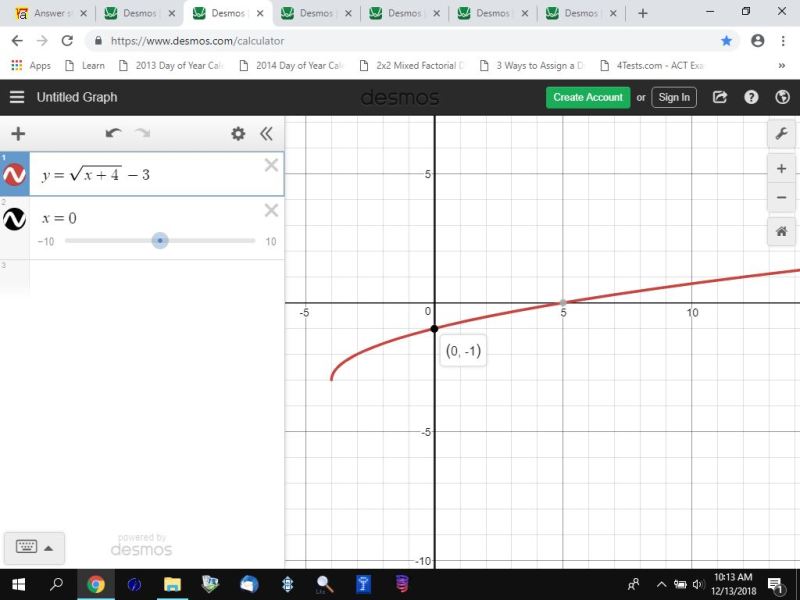if they wanted a reflection about the y-axis, then their answer is correct.
the order of the transformations is important.
if they want you to shift to the left, then shift down, then reflect, you have to do the transformations in that order.
taking what you described as what they wanted, then the program statement is:
transform the equation y = sqrt(x) to shift left 4 units, down 3 units, and reflect over the x-axis.
the answer would be:
y = sqrt(x) becomes y = -(sqrt(x + 4) - 3).
this is the same as y = -sqrt(x + 4) + 3.
your answer was y = -sqrt(x + 4) - 3, which would be incorrect, because the downward shift of 3 units had to be reflected as well.
if the problem statement was:
transform the equation y = sqrt(x) to shift left 4 units, down 3 units, and reflect over the y-axis.
then the answer would be:
y = sqrt(x) becomes y = sqrt(-x + 4) - 3 which becomes y = sqrt(4-x) - 3.
this is the same as the answer that they said is the correct answer.
it is, however, a reflection about the y-axis, and not a reflection about the x-axis.
your answer, though not perfect if the order of the translations is to be taken into account, is a reflection about the x-axis, and not the y-axis.
here's 5 graphs for you to ponder.
the first is the original equation.
the second is the equations after the shift left 4 units and down 3 units.
the third is the second equation after reflection about the x-axis.
the fourth is the second equation after the reflection about the y-axis.
the fifth is what your equation would have given you.
your equation would have given you a reflection abut the line y = -3, not the x-axis, which is the line y = 0.





the graphing calculator i used is at www.desmos.com/calculator.
it's a good calculator once you learn how to use it.
it also helps you to visualize what you are going and the impact it has on the graph.